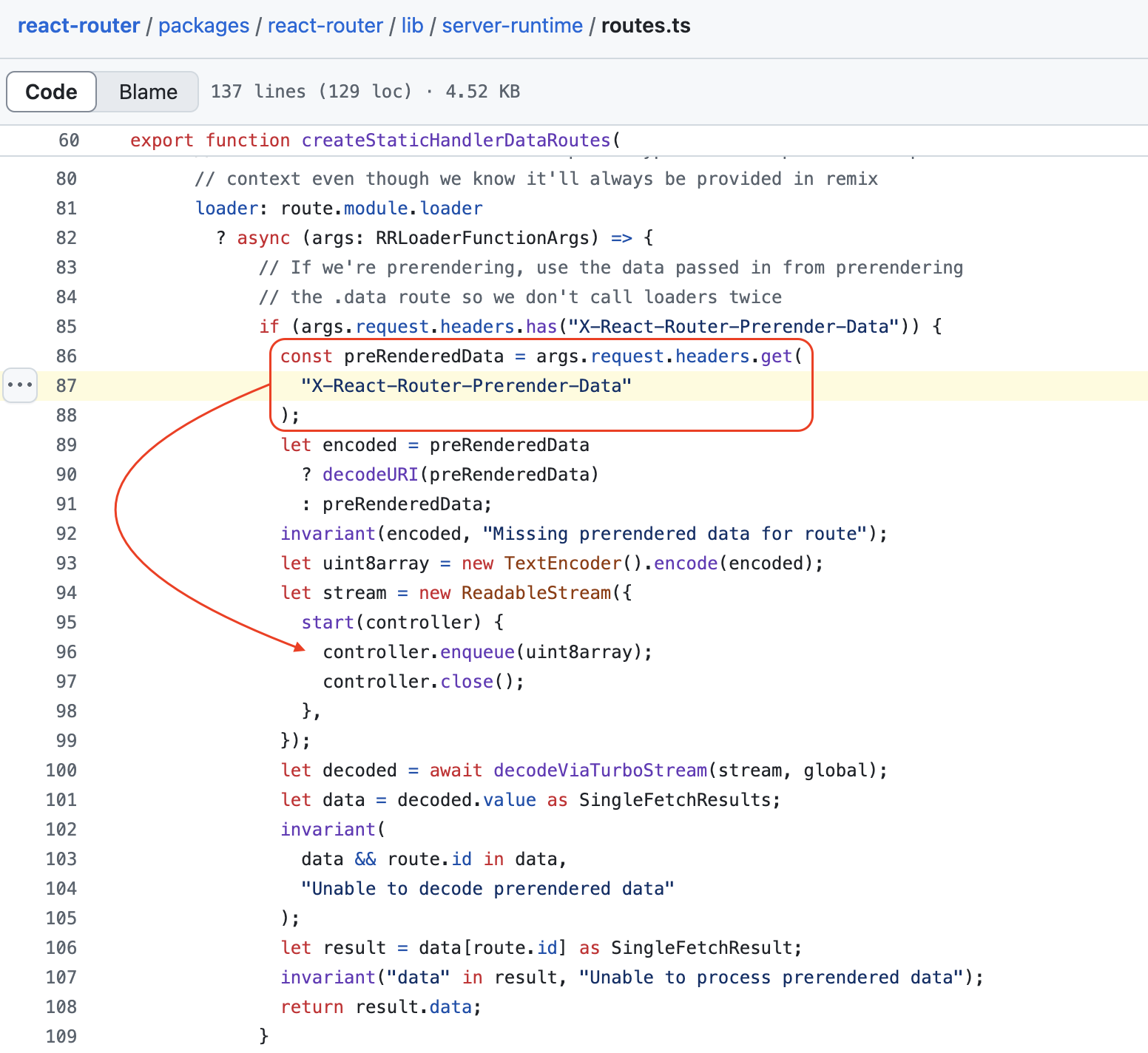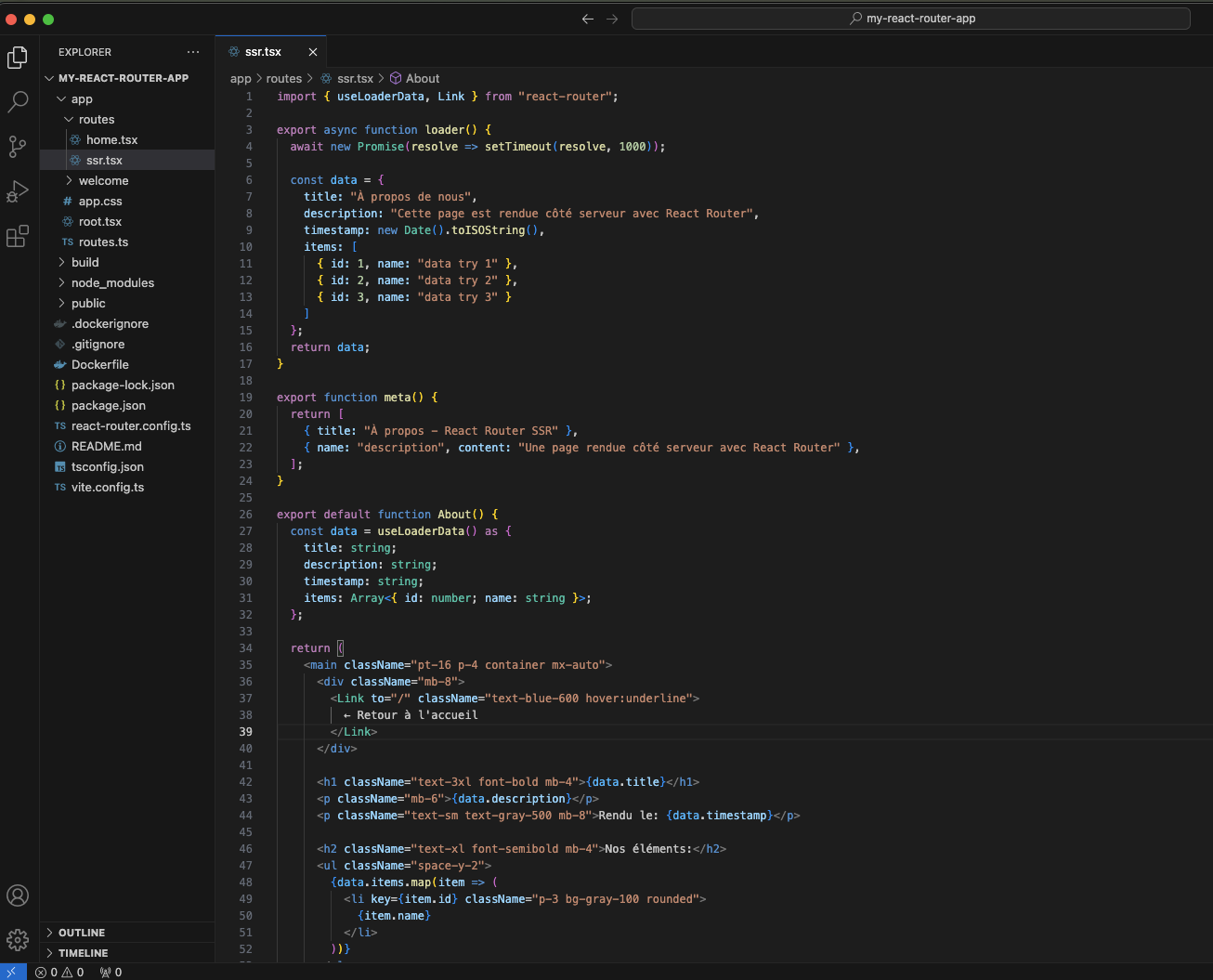Summary
After some research, it turns out that it's possible to modify pre-rendered data by adding a header to the request. This allows to completely spoof its contents and modify all the values of the data object passed to the HTML. Latest versions are impacted.
Details
The vulnerable header is X-React-Router-Prerender-Data, a specific JSON object must be passed to it in order for the spoofing to be successful as we will see shortly. Here is the vulnerable code :

To use the header, React-router must be used in Framework mode, and for the attack to be possible the target page must use a loader.
Steps to reproduce
Versions used for our PoC:
- "@react-router/node": "^7.5.0",
- "@react-router/serve": "^7.5.0",
- "react": "^19.0.0"
- "react-dom": "^19.0.0"
- "react-router": "^7.5.0"
- Install React-Router with its default configuration in Framework mode (https://reactrouter.com/start/framework/installation)
- Add a simple page using a loader (example:
routes/ssr)
- Access your page (which uses the loader) by suffixing it with
.data. In our case the page is called /ssr:

We access it by adding the suffix .data and retrieve the data object, needed for the header:

- Send your request by adding the
X-React-Router-Prerender-Data header with the previously retrieved object as its value. You can change any value of your data object (do not touch the other values, the latter being necessary for the object to be processed correctly and not throw an error):

As you can see, all values have been changed/overwritten by the values provided via the header.
Impact
The impact is significant, if a cache system is in place, it is possible to poison a response in which all of the data transmitted via a loader would be altered by an attacker allowing him to take control of the content of the page and modify it as he wishes via a cache-poisoning attack. This can lead to several types of attacks including potential stored XSS depending on the context in which the data is injected and/or how the data is used on the client-side.
Credits
- Rachid Allam (zhero;)
- Yasser Allam (inzo_)
References
Summary
After some research, it turns out that it's possible to modify pre-rendered data by adding a header to the request. This allows to completely spoof its contents and modify all the values of the data object passed to the HTML. Latest versions are impacted.
Details
The vulnerable header is
X-React-Router-Prerender-Data, a specific JSON object must be passed to it in order for the spoofing to be successful as we will see shortly. Here is the vulnerable code :To use the header, React-router must be used in Framework mode, and for the attack to be possible the target page must use a loader.
Steps to reproduce
Versions used for our PoC:
routes/ssr).data. In our case the page is called/ssr:We access it by adding the suffix
.dataand retrieve the data object, needed for the header:X-React-Router-Prerender-Dataheader with the previously retrieved object as its value. You can change any value of yourdataobject (do not touch the other values, the latter being necessary for the object to be processed correctly and not throw an error):As you can see, all values have been changed/overwritten by the values provided via the header.
Impact
The impact is significant, if a cache system is in place, it is possible to poison a response in which all of the data transmitted via a loader would be altered by an attacker allowing him to take control of the content of the page and modify it as he wishes via a cache-poisoning attack. This can lead to several types of attacks including potential stored XSS depending on the context in which the data is injected and/or how the data is used on the client-side.
Credits
References